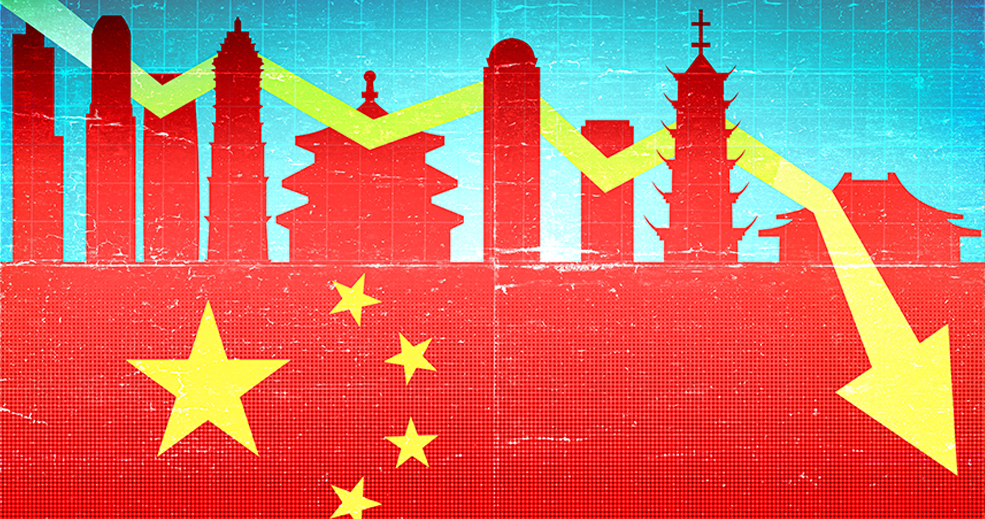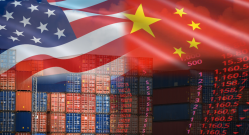
After a terrible 2022, China is keen to make a fresh start
Will 2022 go down in Chinese history as a year unlike any other, or will it mark the beginning of a long, slow decline for the country? Over the last few months, there have been more and more studies looking at whether China has the capacity to become the world’s leading economy. This suggests that, far from catching up with the United States sometime in the 2030s, as had been the prevailing assumption before Covid, China may never catch up with the US [1].
While there is not universal agreement on this notion, recent news from China does tend to support it.
A demographic problem
To start with, China will lose its status as the world’s most populous country in 2023. Thanks to its declining birth rate, China’s population shrank by 850,000 in 2022, despite the government’s decision to relax the one-child policy from 2015 onwards. The fertility rate has fallen to 1.15 children per woman, far short of the 2.1 needed to replace one generation with another.
At that rate, China’s population would fall below one billion sometime around 2075 and end the century at only 672 million, relegating it to third place behind India and Nigeria. Above all, this decline in China’s population has begun earlier than projected – it had previously been thought that it would start sometime after 2030.
Well aware of the problem posed by the accelerating transition, the Chinese authorities have tried to respond by offering future parents allowances or longer maternity leave, alas to no avail. Chinese women, already outnumbered by men – they were the first victims of the one-child policy – study longer, marry later (when they do marry) and have the world’s highest abortion rate. And, when a child is born, the associated housing, education and healthcare costs are considered far too high to have another.
The underlying economic challenges are enormous. China is already facing a huge pension funding problem, with pensions potentially set to rise from 5% to 20% of GDP within the next ten years at a time when the working population is shrinking by 3 million a year. With women allowed to retire at 55 and men at 60, there appears to be a pressing need both to reform and lengthen the number of years’ contributions required to qualify for a full pension and to develop a funded pension system. But while such measures will, at best, help fund the pensions system, they will not reverse the decline in the birth rate.
Labour supply is a key component of any development model. A declining labour supply puts the burden of future growth on capital – i.e. investment – and productivity gains. China is already facing a problem in terms of its capital efficiency, particularly in the public sector, where corporations, often already saddled with excessive debt, are forced to expend ever more resources to create the same amount of value. Moreover, China’s goal had been to shift towards a less investment-dependent growth model – which is liable to be more difficult in a less labour-intensive society.
Demographics affect productivity too: while China still has plenty of room to move higher up the value chain and the proportion of the population with higher education qualifications continues to rise, the declining labour force replacement rate automatically means new methods and technologies take longer to be adopted – and longer still if Chinese people end up having to work longer. Ten years from now, 30% of China’s population will be over 60.
In light of this problem inherent in its growth model, China is looking for drivers that will power economic activity next year.
A problem of growth?
Chinese growth in 2022 came in at 3%, 2.5 percentage points less than the target unveiled in March. Although this figure is in line with consensus expectations, it has been the subject of much comment, being the second-lowest rate since 1976 (the lowest was 2.1% in 2020, the first year of Covid).
The culprit is, of course, public health restrictions, which triggered a drop in private consumption – particularly in services – and snarled up supply chains. Covid tests alone, which city dwellers were required to take every 24-72 hours for over a year, cost China almost 2% of GDP. Ironically, the slight improvement in retail sales in December (down 1.8% year on year, compared with a consensus forecast of an 8.6% decline) was driven by fearful consumers hoarding food and medicines during the wave of Covid infections in the run-up to the year end.
Consumer behaviour during the Lunar New Year could be the first indication of how much consumers might be expected to spend in 2023, the first year in which China has completely reopened its economy.
The recovery in private consumption will be the key factor for growth: having provided such strong support for industrial production in 2021 and 2022, external demand contracted in December for the third month running, with exports down 9.9% year on year. While exports are still high – around $300 million a month, compared with around $200 million before Covid – China can no longer rely on foreign trade making a positive contribution to growth in 2022.
That leaves investment, and particularly public investment, which will surely act as an adjustment variable.
Will the authorities’ change of tone be enough?
The official 2023 growth target will be announced in March. However, targets unveiled by each of China’s provinces give a strong indication of what the national target is likely to be. With most provincial targets coming in at over 5%, that’s more than likely the figure that will be selected. While China can count on favourable base effects, notably in the services sector, the government wants to be sure of the private sector’s support.
Over the past few weeks, the authorities have endeavoured to strike a more reassuring tone on the economy. Two sectors that have had particularly rough rides in recent years appear to be a priority. The first is tech, weakened by brutal and unexpected regulatory measures. Two symbolic decisions have been made in recent weeks. Jack Ma, former chairman of Alibaba, is to give up control of Ant Group, the financial arm of his business. The surprise suspension of Ant Group’s IPO in November 2020 was seen as the first sign of a crackdown on the sector.
Meanwhile, DiDi, a Chinese ride-hailing company (among other things), has been authorised to bring new apps to market and, above all, to sign up new users. The company’s problems began when it expressed a desire to be listed in the United States. Authorities accused it of failing to comply with Chinese data protection laws and handed the company a $1.2 billion fine. Chinese regulators have even had the magnanimity to say they would be willing to reconsider requests from Chinese companies looking to conduct overseas IPOs, de facto suspended for the past two years.
The Chinese government has two aims in reviving the tech sector: to gain autonomy, with the US adopting more and more measures on technological decoupling over the last few months, and to offer opportunities for young graduates, with unemployment among 16-24-year-olds still high (16.7% in December).
The second struggling sector, property, has also received more unambiguous support from the authorities. Although the latter are walking something of a tightrope – the last thing they want is to end up acting as lender of last resort to a sector they see as being largely responsible for its own excessive debt – they have nevertheless indicated their willingness to ease the “three red lines” policy that prevented the most debt-laden developers from refinancing, prompting a wave of defaults.
Banks have also been encouraged to open up credit lines to allow ongoing construction projects to be completed, while some local authorities have lowered mortgage down payment ratios. With the real estate sector as a whole previously accounting for around 20% of the Chinese economy and with 78% of Chinese financial assets invested in property, the challenge is to pull off a soft landing that cleans up the supply side of the market (property developers) without triggering too big a shock to prices.
Lastly, the 2023 budget is likely to include slightly broader-based fiscal support, particularly for local authorities lacking the resources to fund the housing market.
2023 looks set to be a crucial year for China, with the leadership keen to draw a line under the disastrous zero-Covid policy and its consequences. However, the government’s management of public health and the total lack of clarity surrounding it (e.g. complete uncertainty as to the number of deaths over the last few weeks) show that China still has a long way to go when it comes to transparency. This is hardly reassuring for investors chastened by three years of suffocation and restrictions. The demographic downturn, the accelerating pace of technological decoupling, a convalescent property sector and consumers reluctant to spend: China may now be aware of these structural issues but, for the time being, it lacks the ability or the understanding to solve them.












